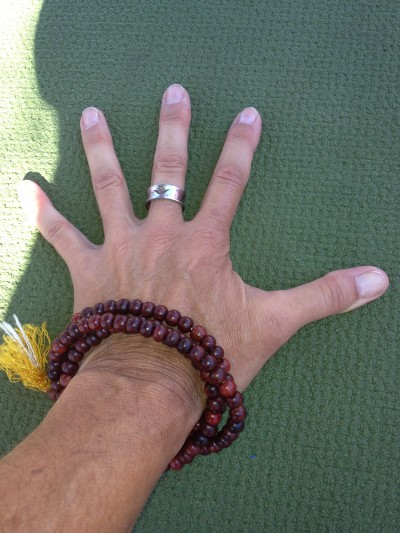
We’re up to Chapter 16 in my daily blogging tour of my soon to be released book, “Stretched: Build Your Yoga Business, Grow Your Teaching Techniques.” Chapter 16 is called, “How to Bring Themes of Classic Yoga Philosophy into Your Teaching.” I wanted to add in a chapter on this subject because sometimes it can be helpful to teach students about some of the other limbs of yoga. As the practice in the United States tends to be heavily focused on the third limb of yoga, asana, students sometimes have no idea that yoga as a practice involves so much more than moving physically.
How you do this and whether or not you do it is a matter of personal style. It’s similar to whether or not you use Sanskrit in your classes. Some teachers, depending on their training and style always use the Sanskrit terms for postures. Some use both English and Sanskrit and some primarily use English. There is no right or wrong way but it’s an interesting discussion to have among teachers because feelings often run strong as to what is the best way. I tend to primarily use English to teach and sometimes pepper the practice with some Sanskrit. When I do use it, I often share something about the Sanskrit phrase (i.e. “pada” means foot) so I can share the history of the word itself. Unless you teach in a studio that is a very traditional one, most of your students will not know Sanskrit and won’t understand how the English and Sanskrit words relate.
In this chapter, I walk through the 8 Limbs of Yoga, explain each one and give some suggestions as to how you could apply it to practice. It’s always a balance between sharing intellectual information and not making it too heady so as to alienate your class, tire them or get them so shifted to a thinking space that they can’t focus on practice. But it can be fun and challenging to take these time tested principles and look for ways to apply them to current times. One of the wonderful things, once you start doing this, is that you find how applicable they are to today’s world. The idea of “Ahimsa” in the first limb, the Yamas, refers to non-violence. How applicable this is as an idea for today’s world! We live in a world with so much physical violence, yes, but there are so many other ways we are “violent” to each other and to ourselves, both in deed and word. Again, bringing these themes into class is not so that you can preach to others or espouse your point of view; it’s to help people understand that there’s a broader context for the practice itself and that it’s not just a one dimensional movement based practice.
One special note: One of the BEST books that shares the wisdom of the 8 Limbs is Rolf Gates’ book, “Meditations from the Mat.” It weaves theory and contemporary application of these concepts through a daily diary approach taken by one of my favorite and first teachers, Rolf Gates. If you don’t have it, it’s a must have.
Next Up: Chapter 17, How to Let Your True Nature Come Through in Your Teaching.Â
